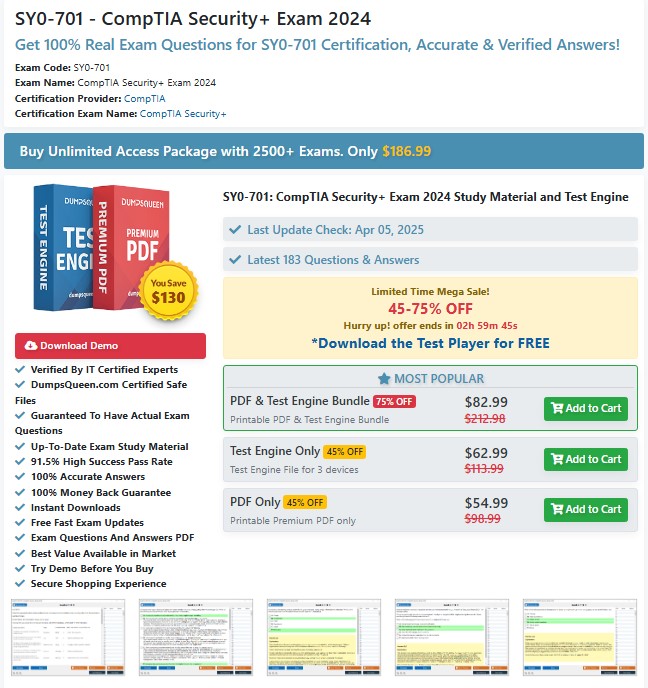Introduction
In the realm of computer networking, the choice between User Datagram Protocol (UDP) and Transmission Control Protocol (TCP) is a critical decision that can significantly impact the performance, reliability, and efficiency of data transmission. Both protocols serve as fundamental components of the Internet Protocol (IP) suite, but they cater to different needs and scenarios. While TCP is often lauded for its reliability and error-checking capabilities, UDP has carved out its own niche in applications where speed, low latency, and simplicity take precedence. This blog, brought to you by DumpsQueen, explores the intricacies of UDP, delves into the specific scenarios where it outshines TCP, and provides a detailed analysis to help professionals and enthusiasts make informed decisions. Whether you're preparing for a networking certification or seeking to optimize your application's performance, DumpsQueen is your trusted resource for expert insights and reliable learning materials.
Understanding UDP and TCP: The Basics
To appreciate why UDP is preferred in certain scenarios, it’s essential to understand the core differences between UDP and TCP. Both protocols operate at the transport layer of the OSI model, facilitating the transfer of data between devices over a network. However, their approaches to data transmission are fundamentally different.
TCP is a connection-oriented protocol, meaning it establishes a reliable communication channel between the sender and receiver before transmitting data. It ensures that all packets arrive in the correct order, retransmitting any lost or corrupted packets. This reliability comes at the cost of additional overhead, including handshakes, acknowledgments, and congestion control mechanisms.
UDP, on the other hand, is a connectionless protocol. It sends datagrams (packets) to the recipient without establishing a connection or guaranteeing delivery. There’s no error recovery, no retransmission, and no assurance that packets will arrive in sequence—or at all. This minimalist approach reduces overhead, making UDP faster and more lightweight than TCP.
DumpsQueen emphasizes that understanding these foundational differences is crucial for determining which protocol aligns with your application's requirements. For scenarios where reliability is paramount, TCP is the go-to choice. But when speed and efficiency are critical, UDP often takes the lead.
The Need for Speed: UDP’s Low-Latency Advantage
One of the primary reasons UDP is preferred over TCP is its low latency. Because UDP eliminates the overhead associated with connection setup, acknowledgments, and retransmissions, it can deliver data much faster. This makes it ideal for applications where real-time performance is more important than perfect reliability.
Consider online gaming, where players need to react to events in milliseconds. In a fast-paced multiplayer game, a slight delay in transmitting a player’s actions (such as moving or shooting) can ruin the experience. UDP’s ability to send data quickly, without waiting for confirmations, ensures that game state updates are delivered almost instantaneously. While some packets may be lost, the impact is often negligible, as the game can continue with the next available update.
Similarly, live video streaming platforms rely heavily on UDP. Services like live sports broadcasts or video conferencing tools (e.g., Zoom or Skype) prioritize delivering a continuous stream of data over ensuring every single frame is received. If a few packets are dropped, the viewer might notice a minor glitch, but the stream continues without significant interruption. TCP, with its retransmission mechanism, would introduce delays that could cause buffering or stuttering, degrading the user experience.
At DumpsQueen, we recognize that professionals in network engineering and application development need to master these concepts to design systems that meet user expectations. Our expertly curated resources help you dive deep into protocol selection, ensuring you’re equipped to make optimal choices.
Simplicity and Efficiency in Resource-Constrained Environments
UDP’s simplicity is another key factor in its preference over TCP. By forgoing complex error-handling and flow-control mechanisms, UDP requires fewer system resources, making it suitable for environments with limited processing power or bandwidth.
In Internet of Things (IoT) devices, for example, UDP is often used due to its lightweight nature. Many IoT devices, such as smart sensors or home automation systems, operate on constrained hardware with minimal processing capabilities. These devices frequently transmit small bursts of data, such as temperature readings or status updates, where the occasional loss of a packet is acceptable. Using TCP in such scenarios would consume unnecessary resources, potentially overwhelming the device.
DNS (Domain Name System) queries are another classic example of UDP’s efficiency. When you type a URL into your browser, a DNS query is sent to resolve the domain name to an IP address. These queries are typically small and require a quick response. UDP’s lack of overhead ensures that DNS lookups are fast and efficient. While DNS can fall back to TCP for larger responses or zone transfers, UDP handles the vast majority of queries.
DumpsQueen provides comprehensive study materials that cover real-world applications of UDP and TCP, helping you understand how to leverage these protocols in resource-constrained environments. Our resources are designed to empower you with practical knowledge for certifications and professional projects.
Multicasting and Broadcasting: UDP’s Unique Capabilities
Unlike TCP, which is designed for point-to-point communication, UDP supports multicasting and broadcasting. This makes it the protocol of choice for applications that need to send data to multiple recipients simultaneously.
Multicasting allows a single packet to be sent to a specific group of devices, which is particularly useful in scenarios like IPTV (Internet Protocol Television) or online radio streaming. For instance, a live sports broadcast can use UDP multicast to efficiently deliver the same video stream to thousands of viewers without overloading the network. TCP, being connection-oriented, would require a separate connection for each viewer, making it impractical for such use cases.
Broadcasting, where data is sent to all devices on a network, is another feature unique to UDP. This is commonly used in network discovery protocols, such as DHCP (Dynamic Host Configuration Protocol). When a device connects to a network, it sends a DHCP discovery message as a UDP broadcast to locate a DHCP server. The server responds with an IP address assignment, enabling the device to join the network. TCP’s point-to-point nature makes it unsuitable for such tasks.
By exploring DumpsQueen’s networking resources, you’ll gain a deeper understanding of how UDP’s multicasting and broadcasting capabilities enable efficient data distribution in modern networks.
Custom Error Handling: Flexibility for Developers
UDP’s lack of built-in error handling is often seen as a drawback, but for developers, it can be a significant advantage. By leaving error correction to the application layer, UDP provides greater flexibility to tailor error-handling mechanisms to specific needs.
In applications like VoIP (Voice over IP), developers can implement custom error-handling strategies that prioritize real-time performance over perfect data integrity. For example, in a voice call, a dropped packet might result in a brief moment of silence or distortion, but the conversation can continue without retransmitting the lost data. TCP’s mandatory retransmission would introduce delays that could make the call feel unnatural.
This flexibility also benefits developers working on niche or experimental applications. For instance, in real-time data analytics systems that process sensor data, developers might choose to ignore minor packet loss to maintain a continuous flow of information. By contrast, TCP’s rigid reliability mechanisms could slow down the system unnecessarily.
DumpsQueen offers detailed guides and practice questions that help developers and IT professionals master the art of protocol selection, including when and how to leverage UDP’s flexibility for custom solutions.
Scenarios Where Packet Loss is Tolerable
In many UDP-based applications, occasional packet loss is acceptable because the data being transmitted is either time-sensitive or redundant. This is a stark contrast to TCP, which is designed to ensure every packet is delivered.
For example, in real-time telemetry systems, such as those used in Formula 1 racing, UDP is used to transmit live data from the car to the pit crew. Metrics like speed, tire pressure, and fuel levels are sent in rapid succession. If a single packet is lost, the next packet will provide an updated value, making retransmission unnecessary. TCP’s insistence on delivering every packet would introduce latency, potentially delaying critical decisions.
Online multiplayer games also tolerate packet loss to maintain smooth gameplay. If a player’s position update is lost, the game can interpolate their movement based on previous data, ensuring the experience remains fluid. TCP’s retransmission would cause noticeable lag, disrupting the game.
Conclusion
Choosing between UDP and TCP is a pivotal decision in network design and application development. While TCP’s reliability makes it the default choice for many applications, UDP shines in scenarios where speed, simplicity, and flexibility are paramount. From real-time applications like online gaming and live streaming to resource-constrained environments like IoT devices, UDP’s low-latency, lightweight nature makes it indispensable. Its support for multicasting and broadcasting further extends its utility in scenarios requiring efficient data distribution.
At DumpsQueen, we are committed to empowering IT professionals, students, and enthusiasts with the knowledge and tools needed to excel in networking and beyond. By understanding when UDP is preferred over TCP, you can optimize your applications and networks for performance and efficiency. Explore our comprehensive resources, practice questions, and certification guides at DumpsQueen to take your networking expertise to the next level. Whether you’re preparing for a certification exam or tackling real-world challenges, DumpsQueen is your trusted partner in success.
Free Sample Questions
Question 1: Which of the following applications is most likely to use UDP instead of TCP?
A) File transfer via FTP
B) Live video streaming
C) Email transmission
D) Web browsing
Answer: B) Live video streaming
Question 2: Why is UDP often used for DNS queries?
A) It guarantees packet delivery
B) It supports multicasting
C) It has low overhead and fast transmission
D) It ensures packets arrive in order
Answer: C) It has low overhead and fast transmission
Question 3: In which scenario is UDP’s lack of error handling an advantage?
A) Financial transactions
B) VoIP calls
C) Database backups
D) Software updates
Answer: B) VoIP calls



